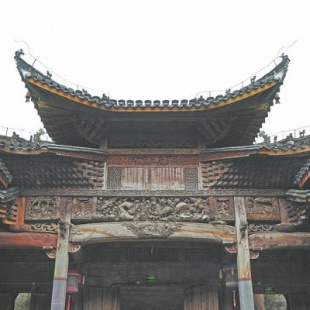Protection takes precedence
To safeguard thousands of historical structures, villages and authorities work to renovate and transform heritage, Xu Lin reports in Shangrao, Jiangxi.

Qianhe Hall, a Qing Dynasty (1644-1911) Huizhou-style mansion, features intricate wood carvings and dougong (interlocking brackets). Huizhou refers to the ancient geographic notion of parts of today's Anhui and Jiangxi provinces.
Adjacent to Qianhe Hall is Fangtang Study, built during the same era, which stands as its scholarly counterpart. Both have been carefully renovated into boutique minsu, or traditional Chinese lodgings, blending modern amenities with historical charm.
Today, Wuyuan county in Shangrao, Jiangxi province, safeguards thousands of such historical structures, some of which are renovated into minsu as examples of utilizing lower-level cultural heritage.
These two buildings were recently identified as the county's latest discoveries in China's ongoing fourth national cultural relics census, underscoring the region's role as a living archive of ancient Huizhou-style architecture.
"We plan to increase monitoring frequency, improve hidden fire safety systems, and regulate commercial operations to meet the protection standards of heritage structures," says Li Jianhua, owner of the two structures.
"Renovating heritage architecture takes priority in protecting architectural authenticity and maintaining original structures and features, while discreetly installing fire and electrical systems. Guided by the local authorities, this approach aims to prevent overdevelopment while generating tourism revenue to fund ongoing preservation," Li says.





































